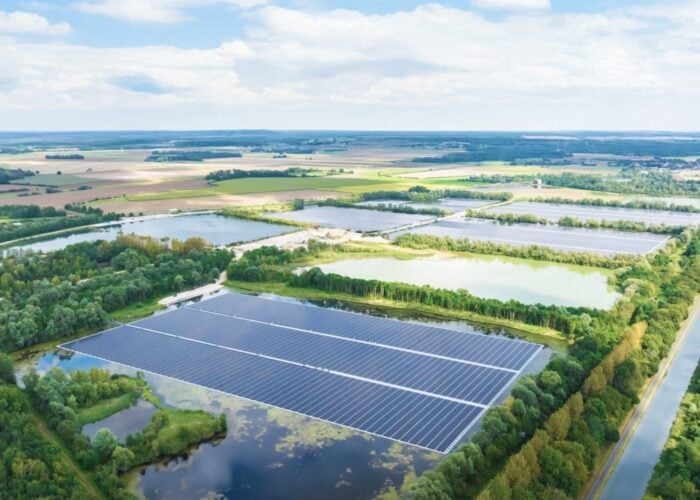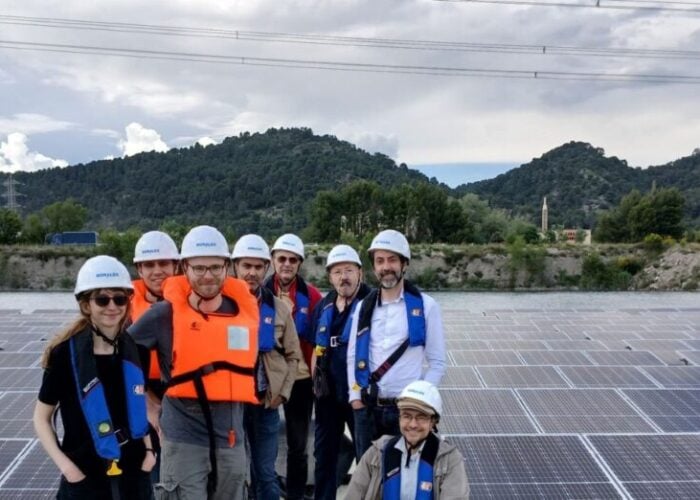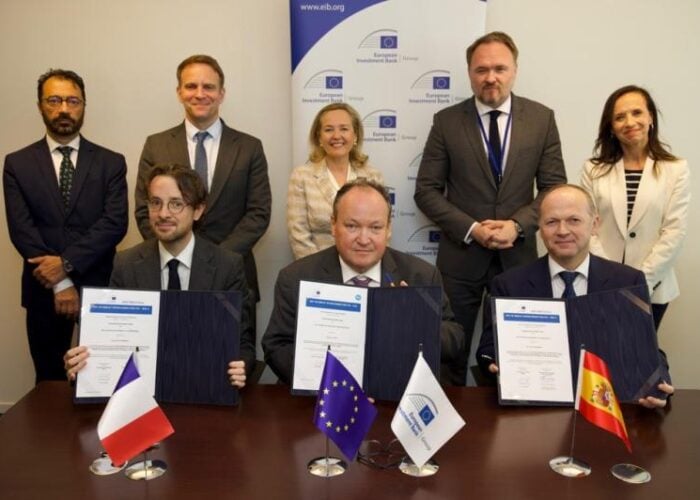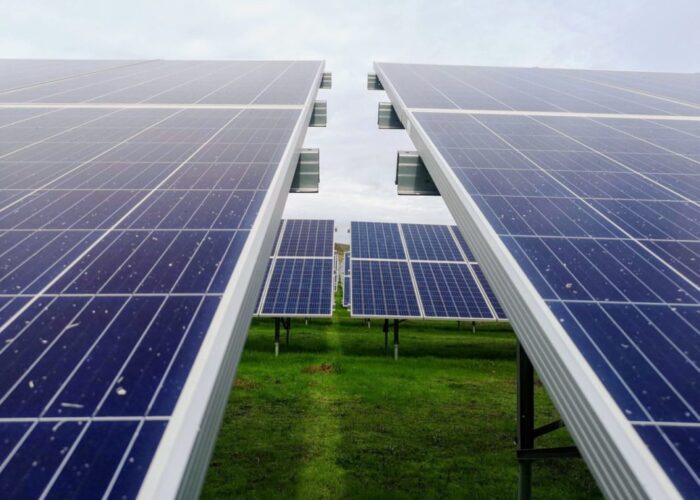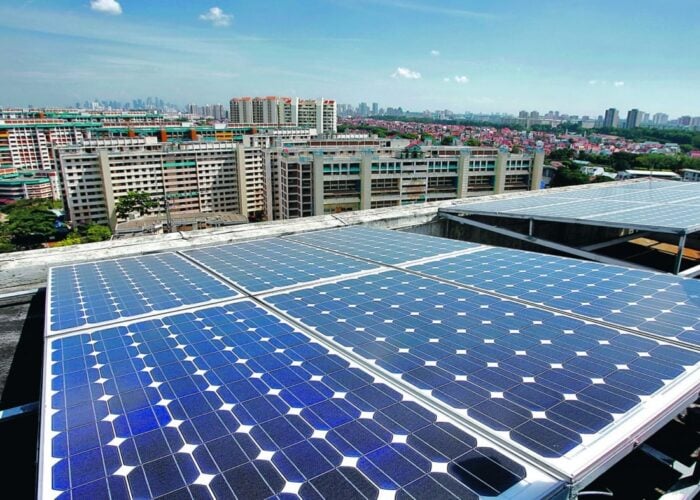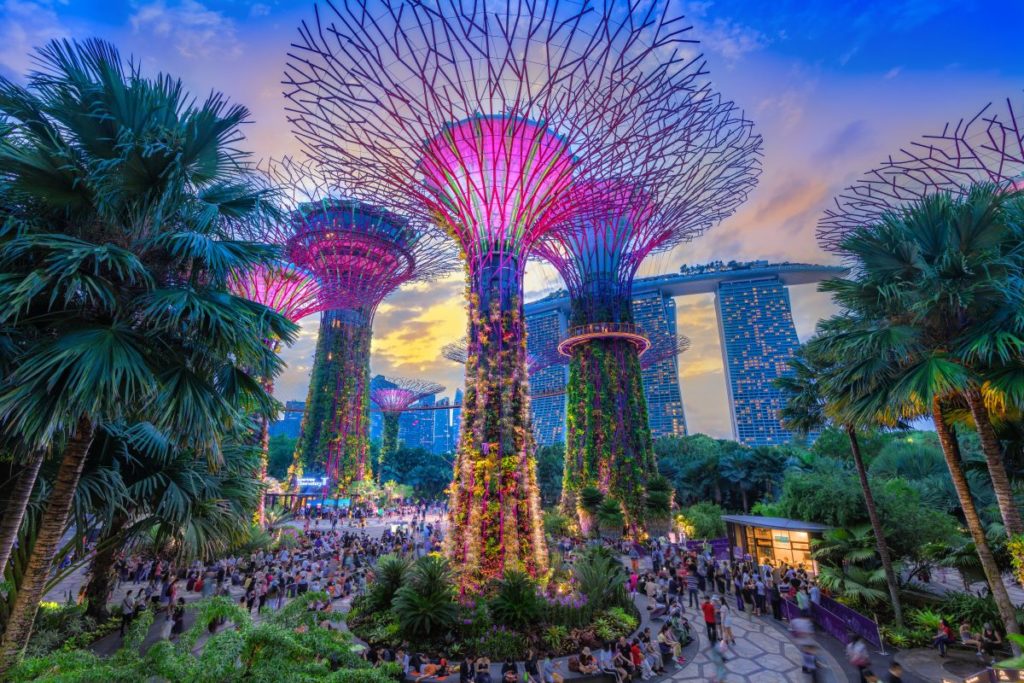
Architect Dr. Silke Krawietz on how Building-integrated Photovoltaics can be used in existing and new buildings and urban structures to create built-up environments that harness the power of nature.
As the world continues to face the challenges of climate change, pollution, and depleting natural resources, there is an increasing need for transformative approaches to urban development. One such approach is the integration of Building-integrated Photovoltaics (BIPV) and Nature-Based Solutions (NBS) in city planning and design.
Unlock unlimited access for 12 whole months of distinctive global analysis
Photovoltaics International is now included.
- Regular insight and analysis of the industry’s biggest developments
- In-depth interviews with the industry’s leading figures
- Unlimited digital access to the PV Tech Power journal catalogue
- Unlimited digital access to the Photovoltaics International journal catalogue
- Access to more than 1,000 technical papers
- Discounts on Solar Media’s portfolio of events, in-person and virtual
This article explores the potential of these innovative technologies in shaping a new era of urban living that is both sustainable and harmonious with nature. It also delves into the collaboration of stakeholders in the real estate and finance sectors for urban transformation, as well as into the impact of the new IPCC report on urban planning and decarbonisation efforts, and key drivers and trends shaping the future of urban living.
Building-integrated Photovoltaics (BIPV) solutions offer a unique opportunity to harness solar energy by incorporating photovoltaic modules into the fabric of buildings and urban structures, enabling them to generate clean, renewable energy on-site. This not only reduces the reliance on fossil fuels but also improves the aesthetic appeal of buildings and urban spaces.
On the other hand, nature-based solutions involve harnessing the power of nature to address urban challenges, such as stormwater management, enhancing green spaces, promoting biodiversity, improving air and water quality and climate adaption. Nature-based Solutions (NBS) leverage nature and the power of healthy ecosystems to protect people, optimise infrastructure and safeguard a stable and biodiverse future.
NBS are defined by the International Union for Conservation of Nature (IUCN) as “actions to protect, sustainably manage, and restore natural or modified ecosystems that address societal challenges effectively and adaptively, simultaneously providing human well-being and biodiversity benefits.’’
By combining these two strategies (BIPV and NBS), cities can transform their urban landscapes into greener, more resilient, and energy-efficient spaces, paving the way for an environmentally friendly future. Moreover, incorporating NBS in urban design, cities can foster a sense of connection between people and nature, promoting well-being and enhancing the overall quality of life.
In the face of the new IPCC report and the urgent need for decarbonisation, cities must embrace a whole-system interliving approach that characterises communities in nature. This requires re-greening cities, enhancing BIPV solutions for electric vehicle charging infrastructure, and implementing innovative and inclusive climate action emerging from cities.
The importance of renewable energy generation in urban areas
With more than half of the world’s population now living in urban areas, there is an ever-increasing demand for energy to power cities. This has led to a growing reliance on fossil fuels, which are not only finite but also contribute to air pollution and climate change. In order to mitigate these negative impacts, cities must focus on generating renewable energy from clean sources like the sun, wind, and water.
Renewable energy generation in urban areas not only helps to reduce greenhouse gas emissions but also creates local jobs and stimulates economic growth. Furthermore, it enhances energy security and reduces the vulnerability of cities to fluctuations in global energy markets. As cities continue to grow and evolve, embracing renewable energy technologies is crucial for ensuring a sustainable and resilient future.
The international net-zero targets cannot be met without considering the importance of buildings and in particular cities, based on the fact that worldwide, buildings are responsible for 37% of global carbon emissions and 34% of energy demand (Source: GlobalABC Status Report 2022). At a global level, cities consume more than two-thirds of the world’s energy resources and are responsible for around the same share of CO2 emissions (C40, Energy & Buildings).
According to the IPCC report the global energy use in buildings could double or even triple by 2050, as the world’s population living in cities is projected to increase further in the next decades. Therefore, on-site generation of electricity through integration of renewable energies and in particular building-integrated photovoltaics (BIPV) has a huge untapped potential.
Collaboration of stakeholders in the real estate and finance sector for urban transformation
The finance sector can also contribute to the cities’ transformation by creating new business models that support the adoption of BIPV and NBS. This may include climate finance solutions that incentivise the development of projects incorporating these technologies, as well as collaboration with the real estate sector to ensure the availability of suitable properties for such projects.
Achieving urban transformation requires the concerted efforts of stakeholders from various sectors. In particular, collaboration between the real estate and finance sectors is crucial for developing new business models that promote the adoption of BIPV solutions and NBS in cities. These stakeholders play a critical role in providing the necessary resources, expertise, and support for the implementation of innovative urban solutions. This collaboration can take various forms, such as joint ventures or public-private partnerships, which can help mobilise the necessary resources and expertise.
For example, real estate developers and investors can contribute by prioritising sustainable building practices and incorporating BIPV and NBS into their projects. This not only helps to create more sustainable cities but also enhances the long-term value and attractiveness of their assets.
Another example of successful collaboration between the real estate and finance sectors is the development of green bonds, which are used to finance projects with environmental benefits, such as renewable energy generation, energy efficiency, and climate adaptation.
This includes providing climate finance solutions that promote investment in BIPV and NBS projects, as well as supporting the development of innovative financial instruments that enable cities to access the necessary resources for urban transformation.
By investing in projects that incorporate BIPV solutions and NBS, the finance sector can support the decarbonisation of cities and help them reach vital climate targets.
Furthermore, collaboration between these stakeholders can lead to the development of innovative financing mechanisms, such as performance-based contracts, which link financial returns to the environmental performance of projects. This can help incentivise the adoption of BIPV and NBS, as well as encourage the continuous improvement of these technologies.
Re-greening cities and creating harmony with nature through BIPV and NBS
Re-greening cities through the integration of BIPV and NBS is essential for creating harmony with nature and fostering a new age of urban living. By incorporating green spaces, promoting biodiversity, and investing in clean energy technologies, cities can significantly improve their ecological footprint and enhance the quality of life for their inhabitants.
For example, Singapore has embraced the concept of a ‘City in a Garden’ by integrating green spaces and BIPV solutions throughout its urban landscape. This includes the creation of parks, gardens, and green corridors that not only serve as recreational spaces but also promote biodiversity and improve air quality.
Gardens by the Bay, Singapore
BIPV in Singapore has become a popular solution for the city’s energy needs. The Supertrees, located at Gardens by the Bay, are a great example. These Supertrees incorporate photovoltaic panels into their design. The electricity generated from these panels is used to power the lights that illuminate the Supertrees at night.
Of the 18 Supertrees in this urban parkland, 11 are fitted with solar photovoltaic systems, creating electricity that provides light within the site’s conservatories.
The Supertrees act as vertical gardens, generating solar power, acting as exhaust air towers for nearby conservatories, and collecting rainwater.
Marina Bay Sands Hotel, Singapore
Among other buildings in Singapore that have adopted BIPV technology is the Marina Bay Sands Hotel, which has a rooftop solar panel system. This technology is not only environmentally friendly but also cost-effective for building owners.
To further improve energy efficiency, Marina Bay Sands installed a 145 kWp solar power system atop the Sands SkyPark – the highest location of solar panels in Singapore. Covering an area of 880 square metres atop the SkyPark walkway, the roof of the restaurant Spago, and the roofs on the elevator shafts of Tower 1 and Tower 3, the 536 solar panels generate enough energy to power all lighting on the Sands SkyPark and will enable Marina Bay Sands to reduce carbon emissions.
The government of Singapore has taken proactive steps to promote BIPV technology in the city. They offer subsidies and incentives to building owners who install BIPV systems. This has encouraged more building owners to adopt this technology and contribute towards a sustainable future.
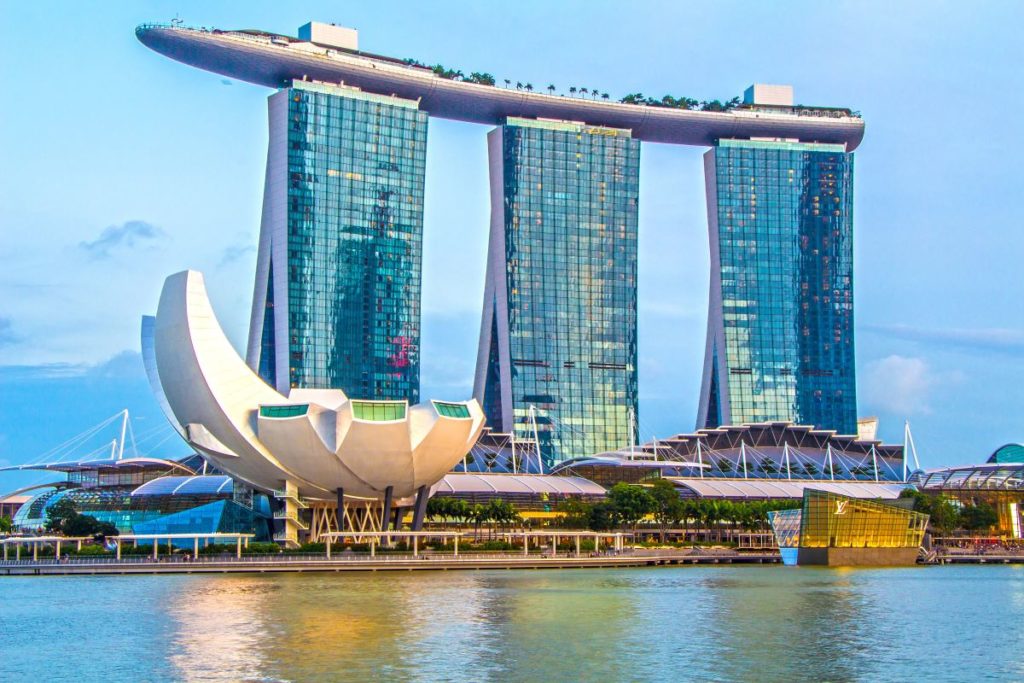
In conclusion, BIPV in Singapore has become an essential part of the city’s sustainability strategy. With increasing awareness about environmental issues, more and more buildings are adopting the technology.
The Supertrees and Marina Bay Sands Hotel are just a few examples of how BIPV technology has been incorporated into Singapore’s urban landscape. With the government’s support, it can be expected to see more buildings adopting BIPV technology in the near future.
Tokyo in Japan and Kuala Lumpur in Malaysia are two cities that have also taken significant steps towards integrating BIPV and NBS in their urban landscapes. In Tokyo, various initiatives have been implemented to promote the use of solar energy in buildings, such as the Solar City Tokyo project, which aims to install rooftop solar panels on 100,000 homes by 2030.
Tokyo implemented the world’s first urban Cap-and-Trade Program (TCTP) already in 2010, requiring CO2 reductions from large commercial and industrial buildings. This programme also supported the adaption of BIPV solutions in the city.
A city-to-city collaboration for low-carbon society between Tokyo and Kuala Lumpur has been created, focusing on initiatives for buildings to decarbonise.
The Malaysian capital, on the other hand, has adopted the River of Life project, which involves the revitalisation of the city’s river systems using NBS, such as rain gardens, bioswales and wetlands. By learning from these case studies, cities around the world can develop their own strategies for re-greening and creating harmony with nature, including use of solar energy in buildings through innovative BIPV solutions.
La Seine Musicale, France
In Europe, there are also exceptional landmark examples for BIPV, such as La Seine Musicale featuring an egg-shaped auditorium and a wall of solar panels that move to follow the path of the sun. The Japanese architect’s Paris-based office Shigeru Ban Architects collaborated with local architect Jean de Gastines on the complex near Paris, located on the Ile Seguin close to Boulogne-Billancourt.
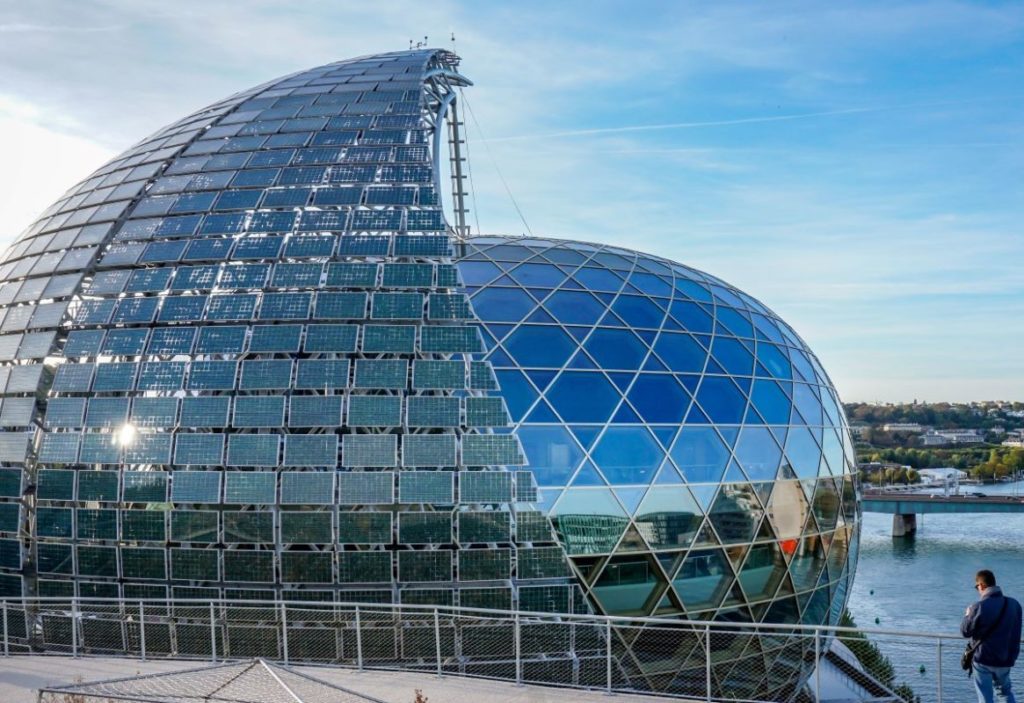
The ovoid structure’s latticed laminated timber frame is sheathed in glazing and sheltered from direct sunlight by a sail-like surface covered with photovoltaic modules.
The triangular sail is mounted on rails that allow it to follow the path of the sun, therefore increasing its efficiency and ensuring the lobby behind is shaded throughout the day.
Envisioning a sustainable future: whole-system interliving in urban communities
Building-integrated Photovoltaics and Nature-based Solutions in urban design can pave the way for a sustainable future characterised by whole-system interliving, where communities in cities function in harmony with nature. This vision entails the development of urban spaces that are resilient, adaptive, and self-sustaining, with minimal reliance on external resources and energy inputs.
Achieving this vision requires a shift in the way cities are planned, designed, and managed, with an emphasis on the interconnections between various elements, such as energy, water, food, and waste. By adopting a systems approach, cities can optimise the use of resources, minimise their environmental impact, and enhance their resilience to climate change.
Integrating NBS and BIPV in urban design
The integration of NBS and BIPV in urban concepts is a critical step towards transforming cities into greener, more resilient spaces. This can be achieved by incorporating these technologies in various aspects of city planning, such as zoning, building codes, and urban design guidelines. For instance, cities can encourage the adoption of BIPV solutions by offering incentives, such as tax breaks or subsidies, for property owners who install photovoltaic systems on their buildings.
In addition, cities can promote the use of NBS in urban design by incorporating green infrastructure, such as green roofs, vertical gardens, and permeable pavements, into their planning and development processes, in combination with BIPV solutions. This can not only enhance the aesthetic appeal of urban spaces but also provide various environmental benefits, such as improved air quality, reduced heat island effects, and enhanced biodiversity.
The new era of urban living: key drivers and trends
The new era of urban living is characterised by various key drivers and trends, such as the growing awareness of the need for sustainable development, the increasing demand for energy-efficient buildings, and the rising importance of climate resilience. These drivers are shaping the adoption of BIPV solutions and NBS in cities, as well as influencing the way urban spaces are planned, designed, and managed.
One of the main drivers of this new era is the growing awareness of the need to reduce CO2 emissions to mitigate climate change. This has led to the development of various initiatives, such as the C40 network, which brings together cities from around the world to share knowledge and best practices for reducing emissions and enhancing climate resilience. The new IPCC report also highlights the importance of decarbonisation efforts in urban areas, given their significant contribution to global emissions.
Another key trend in the new era of urban living is the increasing demand for energy-efficient buildings. This has been driven by the rising costs of energy, as well as the growing recognition of the environmental and health benefits of energy efficiency. BIPV solutions offer a unique opportunity for cities to meet this demand by harnessing solar energy and incorporating it into the built environment.
The untapped potential of BIPV for electric vehicle charging infrastructure
The integration of BIPV solutions in cities not only offers the potential for renewable energy generation but also presents an opportunity for the development of electric vehicle (EV) charging infrastructure. With the global push towards electrification of transportation, there is a growing need for accessible and reliable charging infrastructure in urban areas.
BIPV systems can be integrated into the design of EV charging stations, providing a clean and renewable source of power for charging electric vehicles.
This not only reduces the reliance on fossil fuels but also contributes to the decarbonisation of the transportation sector. Furthermore, the incorporation of BIPV in EV charging infrastructure can also enhance the aesthetic appeal of these facilities, making them more attractive to users and the surrounding community.
Conclusion: Embracing the power of BIPV solutions for cities and nature-based strategies for a sustainable future
In conclusion, the integration of BIPV solutions and nature-based strategies in city planning and design offers a unique opportunity for transforming the urban landscape into greener, more resilient, and energy-efficient spaces. By harnessing the power of renewable energy and natural processes, cities can address various environmental challenges, such as climate change, air pollution, biodiversity loss and resource depletion.
The various opportunities described above for integration of photovoltaics into urban structures could be applied by city administrations for enhancing renewable energy production in cities and to enhance the quality of life of its inhabitants.
To realise this vision, it is essential for stakeholders from various sectors, including the building industry, finance sector, and local governments, to collaborate and develop innovative solutions that promote the adoption of BIPV and NBS. By working together, these stakeholders can pave the way for a new era of urban living.
By embracing the power of BIPV solutions and nature-based strategies, cities can create a new era of urban living that is not only environmentally friendly but also economically viable and socially inclusive. Now is the time for cities around the world to seize this opportunity and work together to create a sustainable and resilient future for all.
Author
Dr. Silke Krawietz is an architect specialised in biophilic design, sustainable buildings and renewable energies, in particular Building-Integrated Photovoltaics (BIPV). She earned her Ph.D. with honours at TU Darmstadt, Germany. She collaborated for many years with the European Commission and the European Institute of Innovation & Technology (EIT), EIT InnoEnergy. Dr. Krawietz is the CEO and Founder of SETA Network, an architectural consultancy which aims to combine the environment, technology and architecture and help create buildings that harness the power of nature, through BIPV, Biophilic Design and Nature-based Solutions. Dr. Krawietz is member of the Global Alliance for Buildings and Construction (GlobalABC), Paris.


